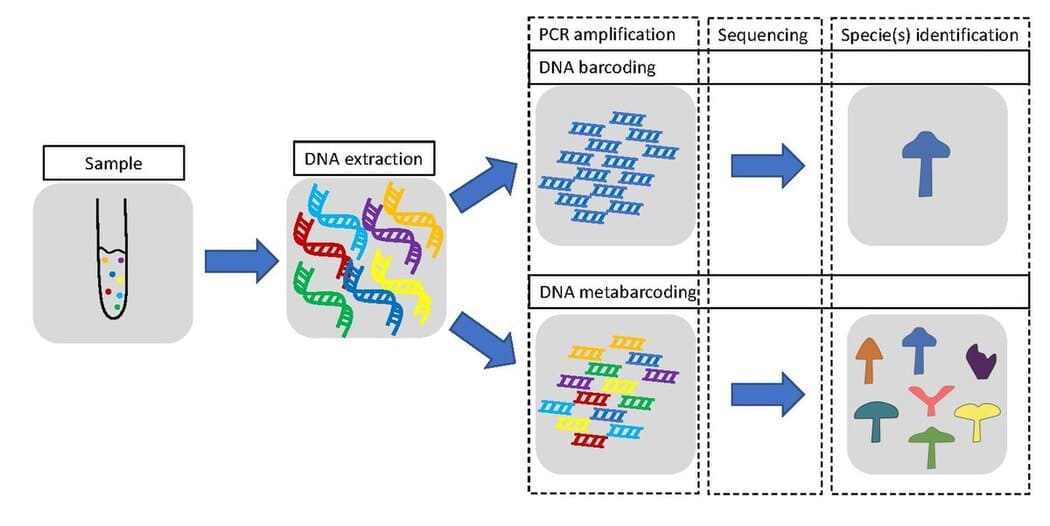
Reviewing DNA barcoding as a means of identifying rare and endangered plant species
Title
Reviewing DNA barcoding as a means of identifying rare and endangered plant species
Author
1. Tejas Khatri, Postdoctoral Researcher, M.S.J. College, India
Abstract
Genamic barcoding is a relatively new concept. The system
was developed to automate the identification of species with high precision and
speed by using tag DNA sequences that are already widely used in biology. DNA
barcoding may be useful for taxonomists and environmentalists. The initial goal
of DNA barcoding is to create a database of all species' barcode sequences that
can be accessed online. These databases will be used as a reference point
against which DNA barcodes from recognised and unidentified samples may be
compared. Because of this, it may be possible to solve several problems with
conventional structural taxonomy, such as misinterpreting species because of
phenotypic variation and genotypic fluctuation of the characters, failing to
recognise cryptic taxa, and having trouble locating reliable characters because
of lengthy maturation times (CBOL Plant Working Group, 2009). Locations where
damage or a lack of development of morphological features makes it difficult to
accurately identify species using just morphological qualities might benefit
greatly from this method. DNA barcoding is a helpful tool since it provides
information about undetected species, but it should not be mistaken for
classification. Methods for selecting and redefining plant barcodes are
discussed, and the authors share their thoughts on and recommendations for
future research and practise.
Keywords
Conclusion
DNA barcoding has made it possible to obtain standard DNA
barcodes from even the rarest and most endangered plant species. Methods that
contextually enhance search efficiency utilising frequently used plant names
and character-based keys for differentiating closely related species when using
plant DNA identification will need to be invented in the not-too-distant
future. In cases when the flowers or fruit of the desired plant cannot be
obtained, this method may be used to accurately identify commercial products
like herbal medicine compounds, rice kinds, and timber wood.
Author Contrubution
The author confirms sole responsibility for the following: study conception and design, data collection, analysis and interpretation of results, and manuscript preparation.
Funding
The authors did not receive any specific grants from funding agencies in the public, commercial, or non-profit sectors for the research, authorship, and/or publication of this article.
Conflict of Interest
All authors declare that they have no conflicts of interest.
Data Sharing Statement
Not applicable
Software And Tools Use
Not applicable
Acknowledgements
I thank the following individuals for their expertise and assistance in all aspects of our study and for their help in writing the manuscript. I am also grateful for the insightful comments given by anonymous peer reviewers. Everyone's generosity and expertise have improved this study in myriad ways and saved me from many errors.
Corresponding Author
Tejas Khatri
M.S.J. College, Postdoctoral Researcher, India
Copyright
Copyright: ©2026 Corresponding Author. This is an open access article distributed under the terms of the Creative Commons Attribution License , which permits unrestricted use, distribution, and reproduction in any medium, provided the original author and source are credited.
Khatri, Tejas. “Reviewing DNA barcoding as a means of identifying rare and endangered plant species.” Scientific Research Journal of Biology and Life Science, vol. 1, no. 1, 2022, pp. 1-5, https://isrdo.org/journal/SRJBL/currentissue/reviewing-dna-barcoding-as-a-means-of-identifying-rare-and-endangered-plant-species
Khatri, T. (2022). Reviewing DNA barcoding as a means of identifying rare and endangered plant species. Scientific Research Journal of Biology and Life Science, 1(1), 1-5. https://isrdo.org/journal/SRJBL/currentissue/reviewing-dna-barcoding-as-a-means-of-identifying-rare-and-endangered-plant-species
Khatri Tejas, Reviewing DNA barcoding as a means of identifying rare and endangered plant species, Scientific Research Journal of Biology and Life Science 1, no. 1(2022): 1-5, https://isrdo.org/journal/SRJBL/currentissue/reviewing-dna-barcoding-as-a-means-of-identifying-rare-and-endangered-plant-species
3157
Total words1177
Unique Words130
Sentence23
Avg Sentence Length0.24932180426411
Subjectivity0.043431318681319
PolarityText Statistics
Viewed / Downloads
Total article views: 93 (including HTML, PDF, and XML)| HTML | XML | Total | |
|---|---|---|---|
| 66 | 12 | 15 | 93 |
Viewed (geographical distribution)
Thereof 93 with geography defined and 0 with unknown origin.